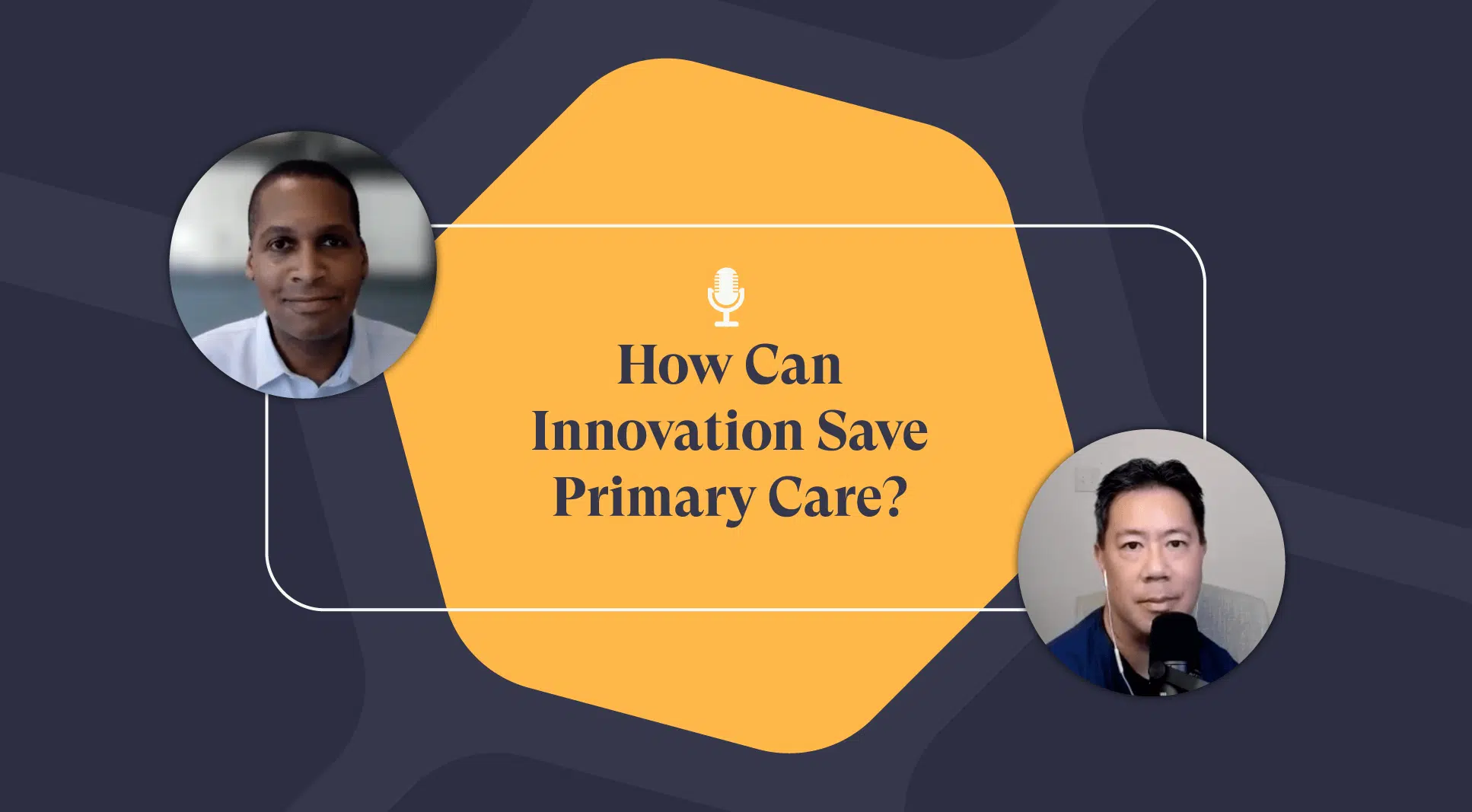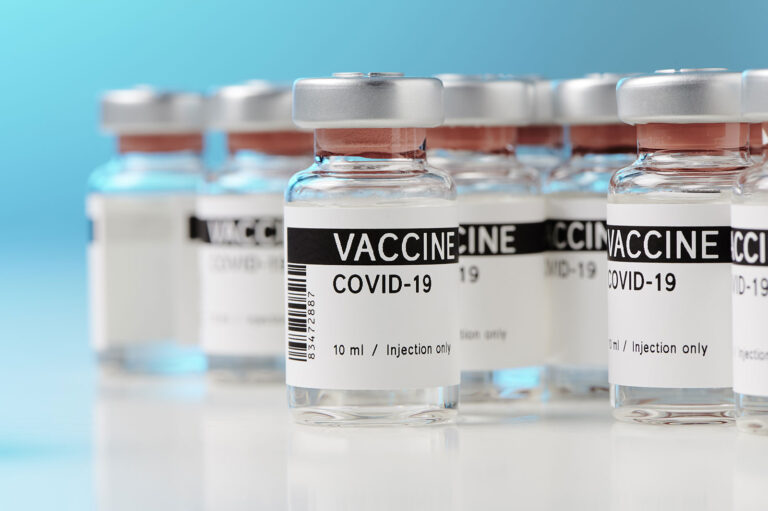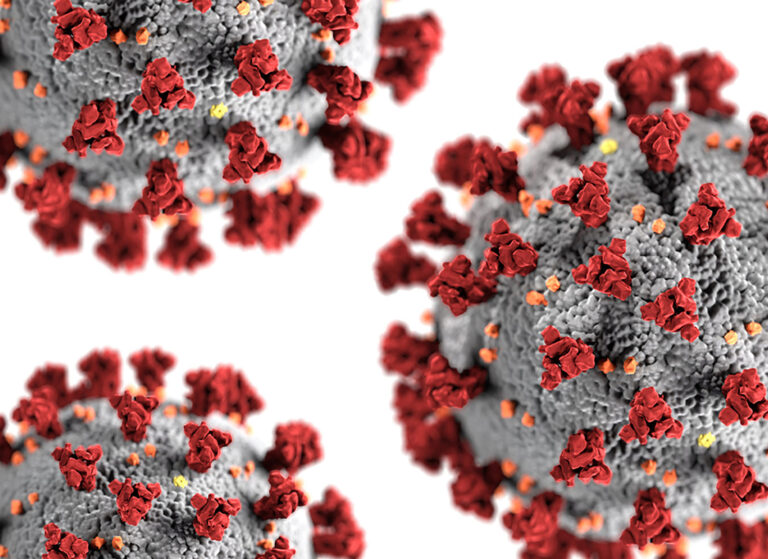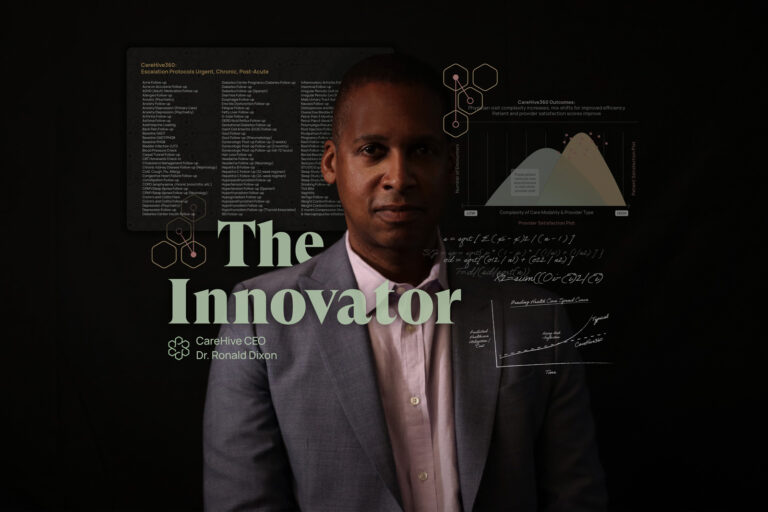How Can Innovation Save Primary Care? Podcast with Dr. Ronald Dixon
KevinMD.com | PODCAST with host Kevin Pho
There is an increase in burnout among primary care physicians and staff. COVID-19 helped illuminate the issue as facilities across the country experienced an elevated number of patients. Dr. Ronald Dixon, CareHive CEO, talks with KevinMD.com on how innovation and technology can help reduce the strain on the healthcare system and potentially save primary care.
TRANSCRIPT FROM PODCAST
Kevin Pho:
COVID-19 booster shots will be widely available by the end of September, for more than 155,000 Americans who have been fHi and welcome to the show, where we’ve shared the stories of the many who intersect with our healthcare system, but are rarely heard from. My name is Kevin Pho, Founder and Editor of KevinMD. Today in our show we have Ronald Dixon. He is an Internal Medicine Physician, and he wrote the KevinMD article, “As Dr. Burnout Climbs, Can We Save Primary Care?”
Ronald, welcome to the show.
Ronald Dixon
Thanks for having me, Kevin.
Kevin Pho:
We’ll get into your article in a little bit but first off, can you share your story and journey to where you are today?
Ronald Dixon:
I am an Internal Medicine Physician. I started training in 1998 at Mass General. And after training in my last year, I did a lot of ICU care and I was really fascinated by the difference of working in the ICU, and then following up in your Primary Care Clinic. So in the ICU I would walk in and everything would be set up for me. I’d have the patients that I needed, to see to be rounded on first, those were all highlighted on a board in front of me. When I walked into the room I would be able to see the vent settings and be able to adjust them, I’d be able to see all of their Hemodynamic Parameters, they were very clear for me to visualize and then make changes on, and then I’d see the nurses notes. And I’d have to write a little quick note about what I’d done with that patient and then move on to the next patient that was prioritized for me by the nurses.
And then I go to Primary Care Clinic and I would be doing pretty much everything, granted I had a Medical Assistant. But I would be trying to gather data about patients that was really relevant to their home life and I didn’t really have any of the data points. The patients that would be coming into my office would come one by one with no real prioritization and often I’d be missing data that would allow me to best take care of them.
So I was kind of comparing and contrasting what was happening in the ICU versus what was happening in my clinic and that’s really what brought me to this idea of, well, why don’t we try to get some information from patients into setting that they’re in from their home and why do we focus so much in office, but especially in outpatient Chronic Disease, when it’s really the things that patients are doing at home and the data that you need from the home that’s going to help best manage that. And that led me down the path of really Primary Care Innovation. I was fortunate to be at Mass General and to be supported with a fellowship that allowed me to really investigate this idea of using technology to engage patients.
I started doing some things that were probably seen as disruptive. I started emailing patients and sending them question sets about their Chronic Disease, like Hypertension Diabetes. So the same kinds of questions that I have asked them in the office, I’ll just send them on email and this was before Hippo, it was like 2002-2003, and patients loved it. And I thought I was doing a better job of managing them and they were avoiding visits. And then I got in a little bit of trouble because of course I was taking revenue off the table for the practice. That made me even more kind of interested in the methodology and this idea of getting data from patients where they are and making your practice more efficient by doing so.
I was able to collaborate with some people at Mass General, some nurses and some other doctors to do some studies about this. And we tested things like Remote and Monitoring back with the BodyMedia device around. If you look at skin impedance and you try to get people to increase activity, “can you affect things like blood pressure and weight”? I started looking at Telehealth, specifically video visits. We did actually the first study of a video visits versus in person visits in a Primary Care Clinic while I was a MGH in Beacon Hill. And what we found that was really interesting was that it doesn’t save time but you can still make the same diagnosis, so you can still do the same E&M. But at the time it was so important to try to take things off physician’s plates, it was already, 2009-2010. We were already overburdened with the EMR. And I was getting overburdened with patient gateway messages, these long form messages that patients would send.
And so that’s what led me to really think about Asynchronous Communication and then how can you really formalize that? And I developed actually a Company and with the help of the Mass General was able to launch a platform that allowed for patients and doctors to communicate using question sets. And instead of the patient coming in for a follow up diabetes, the question set would go out after 30 days and the patient would answer it, and then it would be returned to the clinician to make a decision. And we’d put a patient’s liaison, who was a nonclinical person in between to follow algorithms, just to let the doctor know if he or she needed to make an action.
So really this idea was to use technology and use nonclinical navigation type personnel to help make the doctor’s life easier. And that went well, we scaled it through the hospital, with the help of certain incentives from the Mass General. And we were doing really well over 60 different conditions. And there was a potential of a spin up business. And then Epic came along and said, “we’re going to take care and do all of that”. And I ended up leaving Mass General and went to work for Google Verily on a Digital Diabetes Company called Onduo. And probably two years into it, I got a call from some investors who had been looking at this Company, Healthcare 360, and they called me back and it was during the pandemic and said, “We’re really still interested in what you’re doing, we’d like you to bring that to another company based on Austin, Texas called Remedy”. And so I did that.
I left Verily Onduo, ended up going to this company called Remedy, which is now rebranded into something called CareHive, that I’m now running. So this is the original thesis of using technology to engage patients outside the office, leveraging nonclinical providers, to take burden off of primary care. And then I think the third piece of Asynchronous Data is Quantitative. So when you ask question sets and you answer yes or no, and how do you feel one to five? That Quantitative Data is very powerful because you can use that quantitative data to become predictive and then start understanding who needs to be escalated to what, when and who does need to be escalating, can simply be followed using technology and lower level navigators. And that’s really what we’re doing at CareHive.
Kevin Pho:
All right. Let’s transition to Kevin in the article, and I’m sure you’re going to be talking more about this it’s titled, “As Dr. Burnout Climbs, Can We Save Primary Care”? Now for those who didn’t get a chance to read that article, can you just walk my own audience through it and share the story of why you decided to write it?
Ronald Dixon:
It’s really an extension of the work that I’ve been doing for years. But what happened was, a reporter called me in my current role and said, “what do you think about Dr. Burnout, sounds like some of the things that you’re doing could address it”. And I spoke to the reporter and then she said, “Would you be able to put me in contact with some docs who might be able to talk to me about this”? And I said, absolutely, because I know a bunch. And so I actually started calling some of my friends who are still practicing. And so many of them said, “Yeah, I don’t think I can talk about this because I’m kind of too burnt out to talk about it”. And that was still kind of a, it was a surprise to me. And then it made me think back to, how did we get here?
And that’s kind of what led me to writing this piece, which goes through, how do we get here? One primary care has just been undervalued. So with the way that we’re paid, the relative value of the primary care work has diminished over time compared to the specialist relative value of work. And that’s how we’re paid based on our relative value unit. And given that challenge, there’s been less money attributed to the work and then more administrative burden put on the primary care doctor, which adds to basically the primary care doctor being completely overwhelmed.
And secondly, there’s a lot of uncertainty. So COVID provided tremendous uncertainty. There’s a lot of uncertainty in the industry where everybody says, it’s time to disrupt primary care. So you have Retail Pharmacies saying they’re going to disrupt primary care, you have new entrance into the systems like Google and Amazon, say they’re going to disrupt primary care. You have completely digital entrance into the market saying, we’re going to disrupt and take over primary care. So that degree of uncertainty, there’s no doubt that leads to this idea of burden and the fact that so many physicians feel like it’s not going to exist in five years and 20% feel as if they’re going to be retiring in the next three years.
And my work and the work that I’ve done with colleagues at Mass General, really focused on taking some of that burden off. And the way to take the burden off is leveraging technology the right way. So not adding clicks, but using technology to take work away. Leveraging nonclinical providers to take work off the table, so a lot of this kind of messaging back and forth. If there’s not a real clinical decision that needs to be made, then that should be handled by somebody else, it shouldn’t be overcrowding providers in, in basket.
And then using data, I think to help make the decisions easier on who gets prioritized, who gets seen now, who can wait, not everybody in primary care needs, peanut butter, right? The peanut butter approach to delivering care or everybody just comes in, you settle a problem, then you bring them back at a certain bit of time that doesn’t need to be the case in the modern age. And if you do these things, you can unburden primary care without disrupting it. Primary care is relationship based. I think people really want relationships. It might be that the new millennials, they might not need the traditional primary care relationship. But as people age and they develop issues, and that’s just a part of aging, then that relationship can be valuable. And by leveraging technology and leveraging other people to help that are not necessarily clinical but can guide patients that could create a much better experience for patients, obviously! It’s much more modern and a much better experience for providers because they can focus on the things that they need to focus on and bring joy back into practice through relationship based practice again.
Kevin Pho:
You and I are both Internal Medicine Primary Care Physicians, and I’ve been hearing about Technology Based Disruptions or Solutions for many, many years now. And yet, here we are, we see this, we talk about the same issues year after year and really to be honest, nothing really much has changed. So why is Status Quo so powerful?
Ronald Dixon:
I do think that the payment mechanism has made it extremely difficult to effect change. And finally, that’s changing as, first there was quality type payments, but now we’re really looking into shared risked arrangements. And what I believe is, “You need to stack the cards in favor of the provider, you have to give the provider the capacity to take work off their plate, make it easier”. Technology typically has not been a subtractive. So it’s the EMR, for example, has made things more efficient in terms of billing and the ability to capture revenue for a pair but it hasn’t made our lives easier. And I think we need to figure out where we can insert technology to make our lives easier and leverage some of the new capacities for integration that really didn’t exist in the past five years.
Kevin Pho:
One part of your story that struck me is when you said that you developed this innovative solution of Asynchronous Communication, but your institution then adopted Epic and then you had to leave because Epic was going to quote-unquote, take over that part of the interaction. Now, of course, Epic, as you know, is growing and the largest Electronic Medical Record System in the country. Now, do you feel that scenarios like that is going to stifle innovation for Companies like yourselves or Companies similar to you?
Ronald Dixon:
At the start, it was a limited resource. As a limited resource, you can understand that we wanted to make sure that we have I think in the past it may have. I think because of there’s more openness with new standards, like Fire, for example, that really are forcing people to open up integration points. And there’s this thirst, I would say, both on the patient side and the provider side to make things easier. And I do think, Epic has its place but I’m not certain that the place is to make the lives of either patients or providers that much easier. So therein lies the opportunity for Companies like ours, which we’re really focused on the patient’s experience and the provider’s experience. But we also believe that we can provide better outcomes, both clinically and financially by leveraging this type of asynchronous first navigation and leveraging guides to really connect with patients and guide them on their journey at the behest of their primary care physician and the system overall.
Kevin Pho:
What are the biggest obstacles that prevent technology startups like yourself and innovative idea starters like yourself from being more widely adopted by primary care offices around the country?
Ronald Dixon:
I do want to say, and I don’t want to be polarizing about it at all, I want people to make the best decision for themselves and for I just think that there’s so many barriers to getting seen, to getting visibility, to understanding what the golden opportunity is because of this burden. So I think there has to be an incentive, so on the work that we’re doing, we want to make sure that there’s an incentive for the provider to adopt us. And there has to be an incentive for the patient to adopt us or else we can just seem as noise, until you actually start to work with the patient and have that experience, work with the provider and have that experience and prove results. We are extremely focused on what people call ROI. And that we want to make sure that once a patient comes through our system, there’s immediate value that’s created both on the clinical side so that you can see that the patient actually is getting better taken care of. And then over time, that should lead to better outcomes and less complications of a Chronic Disease. And then much more efficiency on the financial side, so that you’re eliminating the need for hospitalizations due to exacerbations, emergency room visits, through this more frequent touchpoints, technology enabled navigation.
Kevin Pho:
We’re talking to Ronald Dixon, he’s an Internal Medicine Physician and he wrote the KevinMD article, “As Dr. Burnout Climbs, Can We Save Primary Care”?
Ronald you’re at the unique Intersection of Medicine Technology. What would you say are some of the top upcoming trends that we can expect in primary care from a technology standpoint?
Ronald Dixon:
So definitely you’re going to see a lot more of this. A sync data exchange, communication exchange, whether it’s device list or remote monitoring, actual remote patient monitoring with devices. The integration of things that are going on outside the office with what’s happening in the office to make the care much more relevant to the patient. I think another trend that’s really important is the payment trend. The move away from fee service, which is a slow march, it’s something that we’ve been talking about for, I don’t know, 20 years, it’s definitely a slow march. But payers specifically Medicare is really pushing for that because they have seen that there’s value in outcomes. There’s value in being transparent with clinicians around what works for their patients and then enabling technologies and enabling other companies like mine to get into that sphere that allows them to be more effective with their patients.
Kevin Pho:
And my final question, what’s your take home message that you want to lead with the KevinMD audience?
Ronald Dixon:
I do want to say, and I don’t want to be polarizing about it at all, I want people to make the best decision for themselves and for I I think for the audience, it’s really that changes on the way. I think we’ve been talking about it for a long time but when I wrote the article about Burnout and spoke to my colleagues about Burnout, it could seem like there’s no hope, but I do think that there it is hope. I don’t think that new entrance are going to completely take primary care away. I don’t think that Walgreens is going to replace primary care, as we know it. I don’t think that Google or Amazon’s going to replace it. I think there will be alternatives but there is sanctity in the patient-physician relationship and there is sanctity in primary care. And I firmly believe that we need to modernize and leverage technology and get help from navigator type personnel to make our jobs easier. But at the heart of it, it’s this relationship based care and that’s not going to go away. And I think people like me and Companies like ours are really here to enable that.
Kevin Pho:
Ronald, thank you so much for sharing your time and insight. And thanks again for being on the show.
Ronald Dixon:
Thank you, Kevin.






